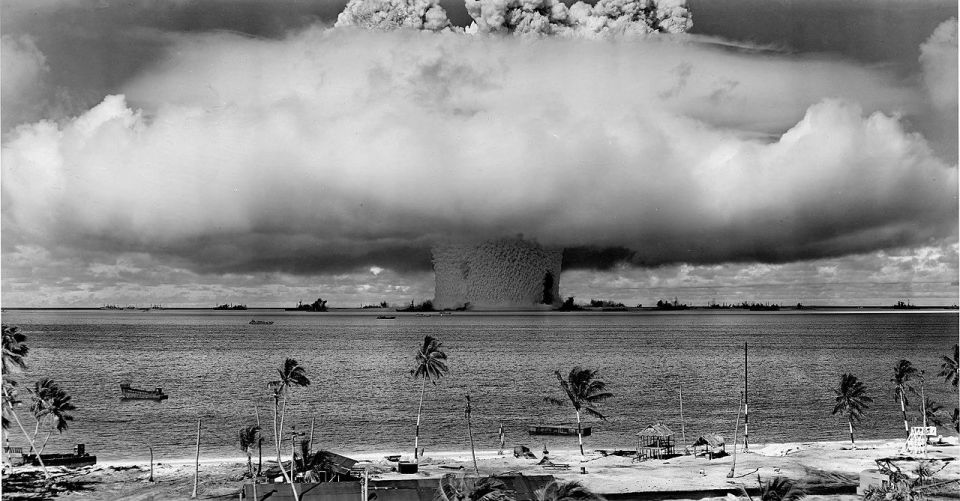On 7 March, 167 residents of Bikini Atoll (in the Marshall Islands, Pacific Ocean) were relocated because Operation “Crossroads” - the second round of US atomic bomb tests – were due to start. Nine of the 11 heads of local families chose to move to Rongerik Atoll, which is a sixth the size of Bikini.
The evacuees were taken to Rongerik by Navy landing ships. The settlers were left with enough food and water for several weeks. However, they eventually started to suffer from malnutrition and the effects of eating fish which had been contaminated by radiation.
Participants of the US nuclear “Manhattan Project” and other scientists warned that the tests were hazardous to the environment and the water near the blast site would become uninhabitable. Secretary of State James Byrnes - who had told physicist Leo Szilard a year earlier that "demonstrating the bomb would make Russia more manageable" - said on March 22: "In terms of international relations, it would be good if the tests were postponed or never carried out at all." He persuaded President Truman to postpone the first test for six weeks; as a result, it took place between 15 May and 1 July.
Chemist Glenn Theodore Seaborg, the longest serving chairman of the US Atomic Energy Commission, called the tests "the world's first nuclear disaster”.
In the Fifties, as a result of numerous large thermonuclear explosions, Bikini’s agriculture and fishing industry was destroyed. Because of radioactive contamination, Bikini remained uninhabited until 2010. In total, 67 nuclear tests took place there from 1946 to 1958.
In 1968, the US authorities declared that the atoll was safe. However, according to researchers from Columbia University, the plutonium levels in some parts of the Marshall Islands were 1,000 times higher than in samples taken near the Chernobyl Nuclear Power Plant, as recently as 2019.
Source:
Jonathan Weisgall. Operation Crossroads: The Atomic Tests at Bikini Atoll. — Annapolis, Maryland: Naval Institute Press, 1994.
























